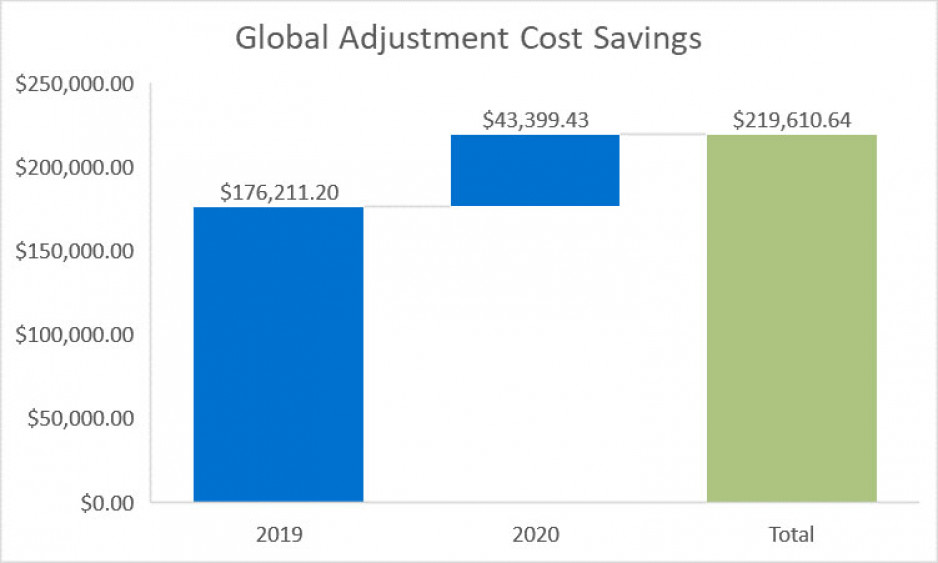Supply Side Management
Supply side energy management refers to the actions taken to ensure that energy is procured and received efficiently, economically, responsibly and reliably.
Alternative Sourcing
Parkwood Institute, which encompasses the Main Building and Mental Health Care Building, receives steam and electricity from London Health Sciences Centre’s power plant located on Commissioners Road, adjacent to both sites and Victoria Hospital. This natural gas-fueled power plant makes use of co-generation principles by directing waste heat produced by electricity-generating turbines to heat-recovery steam generators. The co-generation operation improves generation efficiency and allows St. Joseph’s to purchase power at a lower cost compared to the local distribution company or other sources.
Industrial Conservation Initiative
As a large electricity consumer, the St. Joseph’s Hospital site is able to participate in Ontario’s Industrial Conservation Initiative (ICI) program. The ICI program incentivizes electricity purchasers to shift their electricity consumption to off-peak hours, thereby reducing the stress to Ontario’s electricity grid caused by high peak demands, and creating a more consistent demand for electricity. This program works by allowing each customer to choose whether they would like to pay a portion of their electricity charges based on:
- Their electricity demand during the periods of the year when the entire provincial demand reaches its highest points (Class A), or
- A flat monthly rate shared by all other customers (Class B)
Additional Information on the ICI Class A vs Class B Program
By actively managing and reducing hospital electricity demand during the provincial peak periods, St. Joseph’s Class A cost becomes lower than paying the flat Class B rate, and results in significant annual savings.


